As adults age, they become more likely to develop syndromes like dementia. Characterized by memory loss and behavioral changes, dementia can seriously affect day-to-day life and your ability to take care of yourself. The exact symptoms may vary depending on the kind of dementia a person has. A type of dementia that’s been in the news recently is frontotemporal dementia (FTD).
So what is frontotemporal dementia? Also known as a frontotemporal disorder, FTD is caused by damage to the neurons, or nerve cells, located in the frontal and temporal lobes of the brain. The frontal lobe plays a major role in language and movement, while the temporal lobe affects memory. In this blog, we’ll describe frontotemporal dementia, go over the different types and review how it’s treated.
What Causes Frontotemporal Dementia?
Compared to dementia and Alzheimer’s disease, FTD is not that prevalent. According to the Alzheimer’s Association, frontotemporal dementia affects between 50,000 and 60,000 Americans. It typically occurs at a younger age than other forms of dementia, with most patients ranging from 45 to 65 years old.
The exact cause of FTD is unclear. However, research shows it may be linked to certain genetic variants. Whether someone has a family history of frontotemporal disorders or no connection to FTD whatsoever, they can usually expect symptoms that worsen as the disease progresses.
What Are the Stages of Frontotemporal Dementia?
Generally, patients with FTD go through the following stages:
- Mild impairment
- Behavior and communication changes
- An impairment that impacts daily life
- Personality changes
- Memory problems
- Severe impairment
The exact symptoms vary depending on the type of FTD.
What Are the Types of Frontotemporal Dementia?
Just like general dementia, frontotemporal dementia can be divided into different types. Here’s a closer look at three major frontotemporal disorders.
Primary Progressive Aphasia
Primary progressive aphasia (PPA) is a form of FTD that impacts communication. More specifically, it affects oral, reading, writing and comprehension skills. There are three main types of PPA:
- Semantic PPA: This type affects language comprehension. In addition to not recognizing certain words, patients may forget faces and objects.
- Logopenic PPA: Patients with this PPA are able to understand words but may have difficulty remembering or brainstorming words during conversations.
- Agrammatic PPA: In this condition, patients experience difficulty speaking and may lose all oral abilities. In some cases, mobility is also impacted.
As PPA becomes more severe, it can interfere with memory, judgment and behavior.

Behavioral Variant Frontotemporal Dementia
The next — and arguably most well-known — FTD is the behavioral variant frontotemporal dementia (bvFTD). As the name suggests, it mainly impacts behavior and personality. Patients with this type of dementia may experience the following behavioral symptoms:
- Loss of interest in hobbies, activities and family
- Lack of interest in what others think/how they’re perceived
- Impulsive or inappropriate behavior
- Difficulty planning or prioritizing tasks
Along with notable behavioral changes, patients may experience language problems similar to those caused by PPA. Mobility issues may also occur.
Movement Disorders
As mentioned above, FTD affects the frontal brain lobe, which in turn affects movement. As a result, FTD can cause movement disorders. It has been linked to the following:
- Corticobasal syndrome: Caused by progressive brain nerve cell loss, this syndrome results in the inability to control movement. The biggest symptom is apraxia, or difficulty using the hands and arms.
- Progressive supranuclear palsy: People with this condition have trouble walking and balancing. As a consequence, they may fall down often or experience body stiffness. Some patients also struggle with eye movements and facial expressions.
- FTD with Parkinsonism: As the name implies, this condition shares similarities with Parkinson’s disease. These include behavioral and language changes, muscle stiffness and mobility issues. In many cases, it’s linked to genetics.
- FTD with motor neuron disease: Also known as FTD amyotrophic lateral sclerosis (ALS), this condition causes symptoms of both bvFTD and ALS (Lou Gehrig’s disease). This may include behavioral changes, language problems and growing muscle weakness.
Generally, movement ability worsens as the condition progresses. Some patients with movement disorders will also go on to experience cognitive changes.
How Is Frontotemporal Dementia Diagnosed?
If you notice language, behavioral or mobility problems in a loved one, it’s important to consult a doctor. To diagnose FTD, doctors will generally do the following:
- Ask about symptoms
- Review family and medical history
- Perform cognitive tests and brain scans
Even after inquiring about symptoms and conducting tests, doctors may struggle to reach an accurate diagnosis. This is because FTD shares many similarities with other types of dementia, as well as mental health conditions like depression. Thus, in addition to looking for FTD, many doctors conduct laboratory and psychiatric evaluations to rule out other conditions. If FTD is suspected, the next step is symptom management.
How Is Frontotemporal Dementia Treated?
Currently, there’s no cure for FTD — treatment focuses on managing symptoms depending on the stage of dementia. Many patients benefit from the following forms of therapy:
- Speech therapy: Helps patients improve oral and communication skills through speech and language exercises
- Physical therapy: Involves physical exercises and massages that encourage mobility while reducing pain
- Occupational therapy: Uses everyday activities to help sick or disabled patients gain independence and confidence
Ultimately, speech, physical and occupational therapies can help patients overcome some of the language and movement challenges associated with FTD. However, therapy can’t stop symptoms from becoming more severe over time. To ensure their loved ones receive the care they need, many families rely on senior care solutions.

Cedar Creek Memory Care: Support for Dementia Patients
If you have an older loved one with dementia or a related condition, you know how challenging it can be. At Cedar Creek Memory Care, we give dementia patients and their families the care and support they need to navigate these difficulties. Our dementia care services include:
- Prime location in Maryland
- Safe, homelike environment
- High-quality health care
- Compassionate caregivers
- Holistic memory care activities
Overall, we strive to help patients strengthen memory and mobility, manage dementia symptoms and enjoy a high quality of life. Are you interested in learning more about our memory care facilities in Maryland? Contact us today with any questions!




